|
The Surry area just northeast of Blue Hill, Maine, is a place that has occupied a corner of my mind since I first learned my grandmother was born there. It was always a magical place on the Downeast coast with an old farmhouse that provided a clear view of Mount Desert Island. My picture of heaven. A grey-shingled farm on Newbury Neck in Surry is the home where my grandmother, Mattie Belle Eldridge, was born in 1883, one of five children of Henry Herbert (H.H.) Eldridge. His grandfather had moved to that town in the 1840s. (Read their story here.) As I dug into the history of the 18th-century coastal township that became Surry, I learned the Eldridges arrived some 80 years after the first colonial settlers to the area identified as Township No. 6. This does not include attempts by French settlers, priests and military men to establish outposts along the coast or, of course, the Wabanaki Native Americans who had lived there for thousands of years. Downeast Maine had been a backwater of Massachusetts until the 1760s when migration accelerated northward. The commonwealth of Massachusetts encouraged new settlements that would help the British establish control of the area at a time when the French were claiming portions of the coast. General Pownall came to the Penobscot River in 1759 with 400 men to build a fort near present-day Stockton Springs. Enterprising settlers, driven by lack of land or to exploit the area’s natural resources, soon followed. Matthew Patten, my 7th-great-uncle, is reported to have been the first to settle in Township No. 6, followed by Andrew Flood, my 6th-great-grandfather. By the mid-19th century Surry was a bustling town, with mills and a shipyard that produced some 50 ships. Many young men went to sea in this era and many never returned. Seeing the same hills, rivers and byways that my ancestors populated helped me piece together a picture of their 18th-century world. I started with my 2nd great-grandmother, Margaret Ann Ray, whose gravestone stands largely untarnished in Morgan Bay Cemetery on Newbury Neck in Surry, a tangible, touchable link to those who came before her. The Young Family Tracing back through Margaret Ann Ray’s parentage, I found a broad array of people who settled in the Surry area by the the 1790 census. Chief among them is Margaret Ann Ray’s great-grandfather, Samuel Young. (Read the full story of Samuel Young’s family here.) Samuel and Elizabeth Young’s son, Joseph Cohoes, married Margaret Edmunds and their daughter, Armelia Young, married a sea captained name Henry Jarvis Ray. The Ray Family
In 1852, Armelia and Henry Jarvis Ray’s daughter married Christopher Atwood Eldridge, whose father had moved the family to Surry a decade earlier. By 1862, both Christopher and Margaret were dead and their two young sons, my great-grandfather and great grand-uncle, went to live with their grandfather, Knowles Godfrey Eldridge. The Ray family, it turns out, arrived in Maine as part of a wave of immigrants that moved from Scotland to Northern Ireland before bringing their Presbyterian beliefs to Boston in the early 1700s. These beliefs clashed with the dominating Puritan church and many of them moved north, including the Rays and the Pattens. (Read the full story of Margaret Ann Ray’s Scots-Irish parentage here.) The Wormwood Branch A final, but noteworthy, branch of the Surry family is made up of the parentage of Robert Ray’s wife, Adah Wormwood. Adah was born in 1785 in Surry, the daughter of Joseph Wormwood. Joseph migrated to Township No. 6 from Wells, Maine, an area where his ancestors had landed nearly 150 years earlier, in the 1630s. Adah Wormwood’s birth, it turns out, was a result of some simple twists of fate. Her grandfather was alive after surviving a winter shipwreck while her great-grandfather had his own brush with death. The Wormwood’s family dramatic story starting in Kittery, Maine in 1639 can be read here. Today in Surry the descendants of the Youngs and the Rays are scattered along quiet country lanes. I don’t know any of them but my research has attached all of these people to a huge, spreading family tree.
1 Comment
A When I dug into the background of my maternal 2nd-great-grandmother, Margaret Ann Ray, Eldridge, who was born in Surry, Maine in 1835, I discovered the Scots-Irish branch of my family tree who arrived in Maine in the early 1700s. The rest of my ancestors who settled in Surry were English but Margaret Ann Ray was the descendant of two Scots-Irish families who brought their Presbyterian faith and reputation for physical strength and tenacity to Maine. They came to New England some one hundred years after their ancestors fled Scotland to Ulster, Northern Ireland, with the support of the British crown, which hoped to use them as a buffer against the Irish Catholics to the south. By the early 18th-century, high rents, famine and smallpox made life unbearable in Ulster and over the next 75 years, some 200,000 Scotch-Irish came to the American colonies. An early group of more than 300 Scots-Irish from the River Bann Valley of Ulster arrived in Boston aboard five ships in early 1718. They had negotiated with local officials to receive land grants on arrival but the Boston Puritans spurned them for their different religion and culture. Many of the families headed north and settled in Nutfield, later named Londonderry, New Hampshire, where they introduced potato and flax crops. A smaller group sailed to Casco Bay, off present-day Falmouth, and spent the winter onboard ship, freezing. Of those families, a few stayed in the Falmouth area while others headed south to the Merrimack River. Over time, others settled along the remote Maine coast where they found fertile pieces of land to farm. Margaret Ann Ray’s ancestors were in Biddeford, Saco, and on Flying Point in North Yarmouth, later Freeport, Maine. Another group of Scots-Irish organized by Robert Temple, a former British army officer, settled in the Georgetown and Merrymeeting Bay area, near the Kennebec river, in 1718. British colonists had just built a fort at the mouth of the river, defying Native American Wabanaki claims to the territory and hostilities soon followed. Attacks were encouraged by the French who came down from Quebec to pursue their claims to the territory, supplying the Wabanaki with arms to use against the British and Scots-Irish settlers. Numerous killings and kidnappings drove many settlers to abandoned the area by 1722. By 1725, the Wabanaki had been weakened and they retreated north, allowing the original settlers to return and new arrivals to join them.. We don’t know exactly when the Ray family arrived, though many amateur genealogists have reported that John Ray was born in North Yarmouth about 1728. In 1753, Ray married Mary Patten, in Biddeford. She was the daughter of Hector Patten, another Scots-Irish man who migrated from Londonderry, Northern Ireland, to Boston, then to Falmouth and Purpoodock (Cape Elizabeth) around 1730. Mary Patten was born in 1733 in North Yarmouth, the same place where the Ray family was apparently living. Her mother was Hector’s second wife, Margaret Shear, who died shortly after her birth. Hector Patten and his third wife, Mary, moved to Biddeford in 1739, where he bought forty acres of land. In 1751, He was identified as a “yeoman alias mason,” and his life was largely unremarkable, save for his acquittal on a charge of not attending religious services. The Pattens and the Rays Migrate Further North After their marriage, my direct ancestors, Mary Patten and John Ray, remained in Biddeford, while Hector Patten’s family migrated northward. In 1754, Matthew Patten, Mary’s brother, bought farmland in North Yarmouth, and his parents moved with him. Around 1762, Matthew had moved north to the new frontier of Township No. 6, now Surry, where he is recognized as the first settler. His parents joined him there. Hector Patten died in 1782 and is buried in Surry. John and Mary Ray were said to have died in Biddeford and we don’t know when, or even if, their son, John Ray (born 1754), joined both Patten and Ray relatives who had moved to Township No. 6. He married Hannah Flood, the daughter of early Surry settler Andrew Flood, in 1772 in an unknown town in Maine and his wife gave birth to Robert the same year. Hannah and John’s union was not destined to survive long. Four years later, Hannah married another man, James Patten, though John was still living. John Rae (Ray) was identified as living across the bay from Surry, on the east side of the Union River, where he was one of two members of the Revolutionary War’s Committee of Correspondence that sent a letter dated August 6, 1776, asking for arms. John Ray’s name does not appear in the 1790 census of Surry, though his brothers Matthew and James both do. Robert Ray, John and Hannah’s son, settled in Surry and prospered. His son, my 2nd-great-grandfather, Henry Jarvis Ray, was a farmer, like his father. According to the Biographical Review, Robert Ray, was born and reared in a coastal town of Maine and after his marriage to Adah Wormwood, settled in Surry. “Having bought a tract of unbroken land on the Shore Road, he cleared a part of it, and for a time tilled the soil. He subsequently sold that property, and purchased land on the Bay Road, on which he was engaged in general farming and lumbering until his death, at the advanced age of seventy-nine years. His wife died at the homestead in the sixty-sixth year of her age.” Henry Jarvis grew barley on his farm on Newbury Neck in Surry and grazed eight sheep and other livestock on 67 acres. By the time he was 61 years old, in 1870, the livestock was valued at $198. One of his sons, Jesse Ray, became a prominent citizen and served in the state legislature. Owner of a grist mill, the Henry C. Wood Company, he built the Surry Village School in 1872 for $2,000. Henry Jarvis’s oldest child, Margaret Ann, married Christopher Atwood Eldridge in 1853 in Surry. The couple moved into a house near the shipyard in Surry, right next door to Christopher's father, Knowles Godfrey Eldridge. Seven years after they married, Margaret Ann died at age 24, leaving two young sons, Charles and Henry Herbert. Christopher Eldridge died two years later and the boys were orphaned, going to live with their paternal grandfather, who manufactured clothing in Surry. Throughout their lives the Eldridge boys held on to a faded photo, a memory of their maternal grandmother, Armelia Young Ray, the wife of Henry Jarvis. Discover more about this topic in Scotch-Irish in New England by Rev. AL Perry, Professor of History and Politicis Wiliams College, Williamstom, Masss. Taken from The Scotch Irish in America: Proceedings and Addresses of the Second Congress in Pittsburgh, Penn. May 29-June1, 1890.
https://www.libraryireland.com/articles/ScotchIrishNewEnglandCongress1890/index.php http://hillfamilyweb.com/wp-content/uploads/2016/01/Thomas-Means-Exhibit-Freeport-ME-Historical-Society.pdf https://www.maineulsterscots.com/ William Wormwood (1620-1690) My Wormwood ancestors who came to Maine in the 1630s landed in Kittery Point, then moved on to take part in the burgeoning fish trade on the newly-settled Star Island, one of the Isles of Shoals seven miles off the coast. The Maine frontier was rough, and unlike the Puritans who settled in Boston, people came there to fish, not to pray. Codfish was abundant off the Isles of Shoals, the average codfish weighing 150 pounds, and the fishermen supplied salted cod to early settlers from Massachusetts to Virginia. William Wormwood may have been a mate on fishing vessels but what we know for sure is that he and his wife, Catherine, lived in the fast lane for the times. In 1644 they sold their land in Kittery and moved to Star Island. Three years later, authorities expelled them from the island for “improper dealings” with sailors, presumably selling them too much liquor. The Wormwoods were cast off the Island with a man named William James, who moved in with the couple in Kittery. In 1647, Catherine was arrested and sent to the court in Boston to face charges of adultery. She was later released, though she and James apparently continued to carry on. Six months later the court ordered that William James and William Wormwood should “part household and for to build another house by year’s end.” That move did not keep Catherine and William James apart and in October 1650 the court again ordered that James “shall hence forward separate himself from Catherine Wormewood & must forthwith pay his Fourty shillings for his breach of the last Court order about his separation.” The historical record shows that William Wormwood became "a common swearer and a turbulent person" but he and Catherine eventually moved back to the Shoals, again shadowed by a court order that warned “if the Fishermen of the Iles of Sholes will entertaine Wormewood and his wife, they have liberty to sit downe ther provided that they shall not sell neither wine, beare nor Licker." The pair later returned to Kittery. The couple gave birth to several children, including my direct ancestor, another William Wormwood, in 1654, who became a carpenter and lumberjack. (See Massachusetts and Maine Families in the Ancestry of Walter Goodwin Davis, Vol. III) He also served as the constable of York in 1685 and 1686. Fatal Conflicts with Native Wabanakis This area, now part of York County, Maine, was a dangerous frontier where settlers lived inside palisaded garrisons to protect themselves from attacks from Wabanaki warriors backed by the French. William’s brother, John, and two other men were taken prisoners by Native Americans in 1676 and the regional British official, Richard Waldron (another of my ancestors), negotiated their release in Pemaquid by paying a ransom of twelve skins for each of the men. William Wormwood was not as fortunate. Fourteen years after his brother’s release, in October 1690, William was helping load timber onto a ship at nearby Cape Neddick when he was killed in an attack by a Wabanaki war party. Thomas Wormwood (1684-1751) . William’s son, Thomas, was six years old when his father died and he grew up to be a farmer and a fighter, living in the village of Larrabee, which was a fortified garrison. In the “History of Kennebunk Port” Bartholomew Gosnold, writes that in 1723, William took charge of Harding's Garrison while Mr. Harding was off on a hunting expedition. "The garrison housed about 30 women and children at the time. Thomas wasn't expecting an attack and took a boat to board some of the coasting ships that were in the river loading lumber. Thomas heard the alarm guns from Major's Garrison and returned and closed the gates when the Indians were within 20 yards of him. Sagamore Wahwa was irritated with his men for alarming the garrison just for the scalp of the white headed old man Mr. Bailey whose scalp they placed on a pole in view of the folks in the garrison. The Indians destroyed the remaining crops and killed the cattle who continued their raids through the fall.” Thomas’s son, William, was a soldier in Harding’s garrison when he and Ebenezer Lewis were loading a sloop under the command of Capt. John Felt in Gooch’s creek on April 25, 1724. The three men came under attack by Wabanaki fighters. The captain and Lewis were shot in the head but William Wormwood made it ashore, pursued by the warriors. He put his back against a stump to defend himself with the butt of his musket, but was shot several times and died. The bodies of the settlers were buried near Butler Rocks. (From: The history of Wells and Kennebunk, from the earliest settlement to the year 1820.) Joseph Wormwood (1718-1767) William Wormwood’s brother, Joseph, survived the violence that pervaded York county only to nearly lose his life when he was shipwrecked on Mount Desert Island. In 1746, 28-year-old Joseph was one of a group of 100 men pressed into service against the French near the end of King George’s War. The men from Wells and Arundel Maine crowded onto a ship heading to Nova Scotia that wrecked during a fierce snowstorm. All but a handful of men died. Wormwood and three comrades from Wells survived and made their way ashore onto Mount Desert Island, where they faced “fearful hardship and suffering.” (History of Wells and Kennebunkport) No houses existed on the island and the men shot fowl for survival as they fashioned a rough boat that they managed to sail south to Townsend (Boothbay) to find help. (From: The history of Wells and Kennebunk, from the earliest settlement to the year 1820.) Joseph returned to Wells where he married Sarah Evans in 1748. Their son Joseph, was born seven years later, in 1755. Joseph Wormwood, Jr. (1755-1838) Joseph Jr., married Mary Hall when he was 19-years-old and apparently the newlyweds left Wells shortly after the wedding heading to Township No. 6, Surry. Their daughter, Adnah, my 4th-great-grandmother, was born in Surry the next year, 1785. Joseph and Mary resided in Surry until their deaths in 1838. According to their gravestone markers, they changed their last name to Wood. Adnah Wormwood Ray died in 1853. Samuel Young was an early settler of Surry, Maine, arriving by 1778. His name was common, making it is difficult to determine who Samuel Young’s parents were, though the Young family dates back to the 17th century in the greater York, Maine area. A local historian who wrote the bi-centennial history of the town says the Youngs came from Old Newbury, Massachusetts. One source notes that a Samuel Young was born in 1735 in Northern Ireland, then emigrated. If so, he may be a Scots-Irish immigrant (link). We do know that before Samuel Young moved north, he married Elizabeth (Sarah) Joy on May 10, 1761, in Biddeford, Maine, a fact that could tie him either to the Young family in neighboring York or to a migrant from Old Newbury. According to Osmond Bonsey in his history of Surry, “the young settlers were sons who could find no land near their parents; others were people always restless, who never stayed long in any one place or who preferred solitary existence…These settlers were familiar with the area as they had often been to the east on fishing or trading expeditions.” By the 1780s, Bonsey writes, there were a number of settlers from "Old" Newbury, Massachusetts, including the Clarks, Treworgys and Youngs who settled on Newbury Neck in Surry. The historical record shows that these Massachusetts settlers were mobile, and many stopped in places like York or Saco, Maine, for a couple of years before trying their chances further north in Surry. Although an exact arrival date is impossible to fix, Young certainly arrived in Surry by the time of the American Revolution. Samuel Young's Revolutionary War Service He was mustered into militia service in July 1779, one of the hundreds of poorly trained farmers and mariners sent in at the tail end of the failed Penobscot Expedition. The 48-year-old farmer served for 17 days in Colonel Ebenezer Buck’s company of volunteers, which was part of Col. Josiah Brewer’s regiment and Col. Lovell’s brigade. Samuel Young appears as a resident of Surry in the 1790 census in a household with three males under age 16, three older than 16 and four females. He died three years later, in 1793, though his grave site remains unknown. A 19th-century biographical sketch confirms much of this. It reports that Samuel Young came from Saco, Maine, and “settled on (Newbury) Neck, close to the shore. He took up a tract of wild land, which by means of incessant toil he converted into a good farm. Like his pioneer neighbors he built a log house and there dwelt for rest of his life, rearing his family and reaching good old age.” Elizabeth Sarah Joy Young (1737-82) Another question that cannot be satisfactorily answered is the heritage of Samuel Young’s wife, Elizabeth Joy. The couple was married in Biddeford, Maine in 1761, and many amateur genealogists say she was born in 1737, a daughter of Benjamin Joy and Elizabeth Hovey. That would make her a sister of Benjamin Joy II, who is celebrated as a founder of Ellsworth, Maine, which borders Surry. Benjamin Joy appears in the early records of Township No. 6 and it would make sense that his sister and brother-in-law, Elizabeth and Samuel Young, followed him to the area. Joseph Cohoes Young (1778-1863) Samuel Young’s son, Joseph Cohoes Young, my 4th great-grandfather, was born in 1778, in Surry. His biographer writes that “Joseph Young was born in the old log cabin on the homestead which his father wrested from the wilderness. During his earlier years he was employed in coasting. Subsequently he turned his attention to farming, in which he was successfully engaged until his death at the venerable age of four score and four years. A son of sterling integrity, he became prominent in town affairs and wielded an influence for good in the community. To him and his wife, whose maiden name was Margaret Edmunds, eight children were born.” Margaret Edmunds Young (1791-1831)
Margaret Edmunds’ parentage is much hazier. Death records say she was born in either Gouldsboro or Sullivan, Maine, but no one with this surname appears in the 1790 census. Other clues about any Edmunds living east of the Penobscot include the 1791 naturalization record of John Edmunds, an Irish immigrant who swore he had lived in the U.S. for at least two years and maintained a “good moral character.” John Edmunds was in Machias when he was naturalized and the same town recorded a marriage of John Edmunds and Jane M. Dole three years later, on February 16, 1794. A late 19th-century history of the Narragaugus Valley, which includes the area from Steuben to Machias, notes “the first school was taught by one John Edmunds, an Irishman, in the house of Mr. Isaac Patten, that stood near the Creek.” Margaret Edmunds was born in 1791 so whether she is the daughter of John and Jane remains a mystery. The marriage of Joseph C. Young and Margaret gave birth to Armelia Young, who married a sea captained name Henry Jarvis Ray. In 1852, Armelia and Henry Jarvis Ray’s daughter married Christopher Atwood Eldridge, whose father had moved the family to Surry a decade earlier. By 1862, both Christopher and Margaret were dead and their two young sons, my great-grandfather and great grand-uncle, went to live with their grandfather, Hezekiah Eldridge. (Read the full story of Robert Ray’s Scots-Irish parentage here.) |
Names of My AncestorsPuritans & Servants Archives
February 2019
Categories |
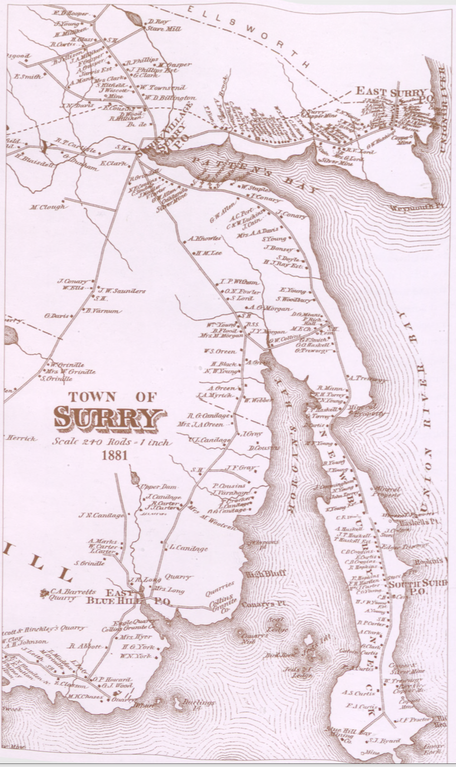
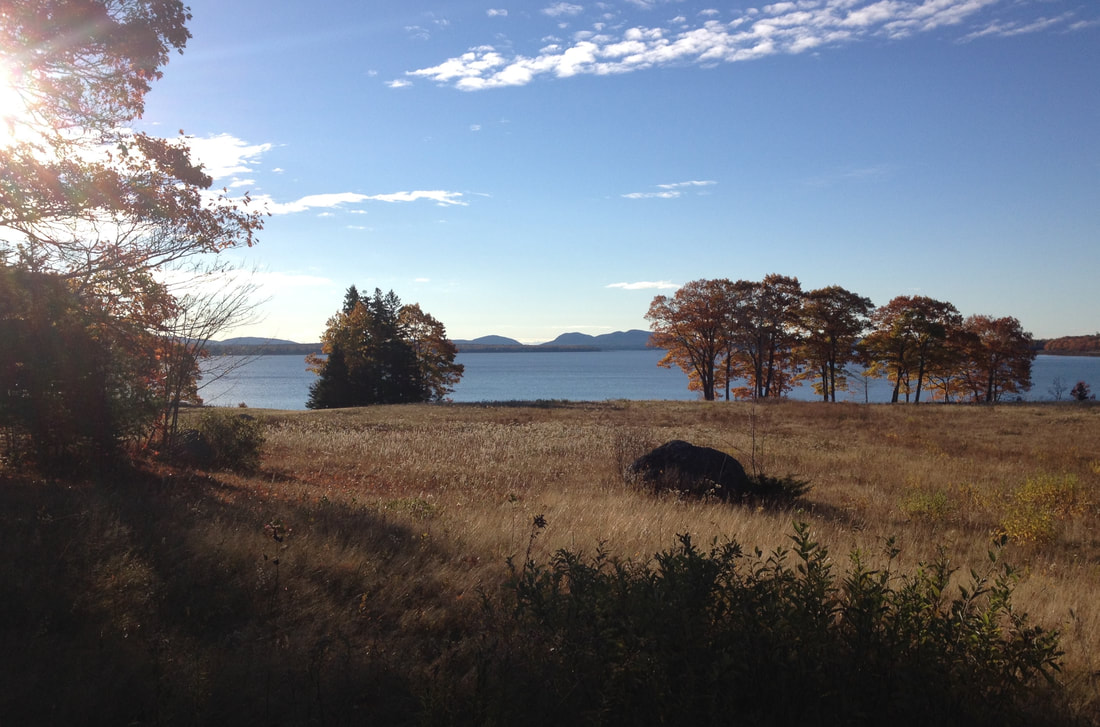
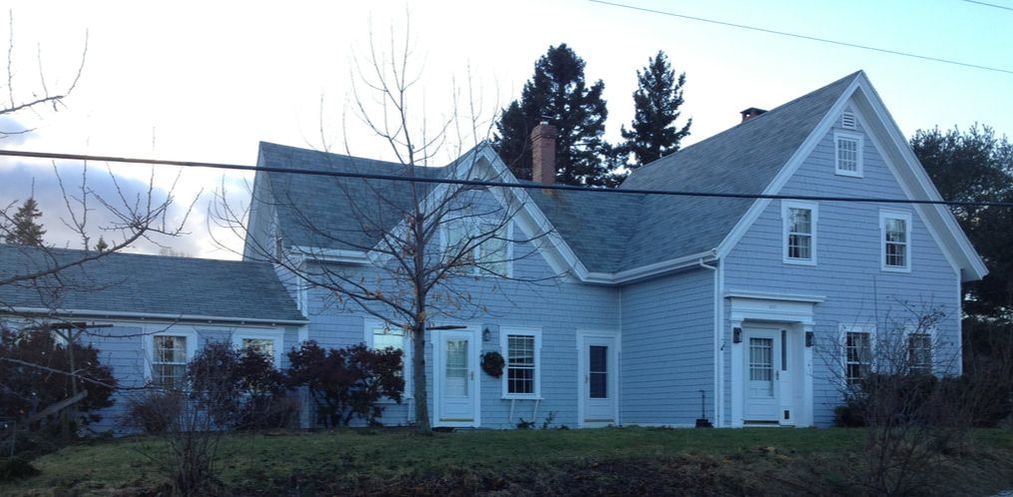
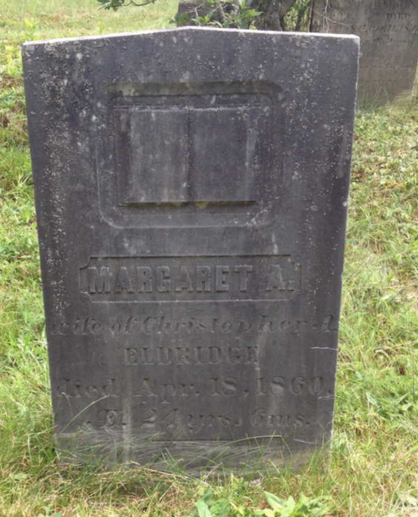
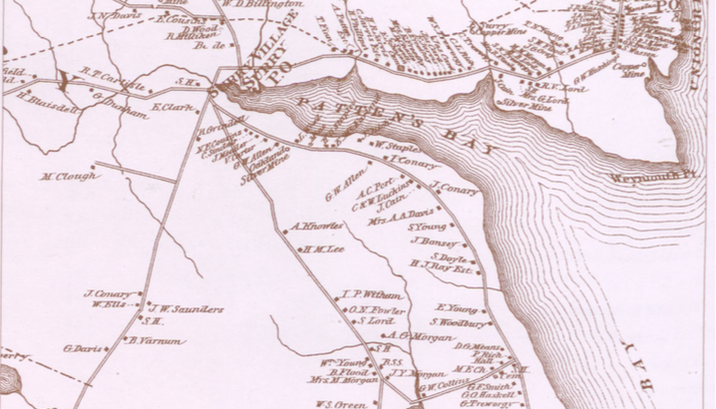

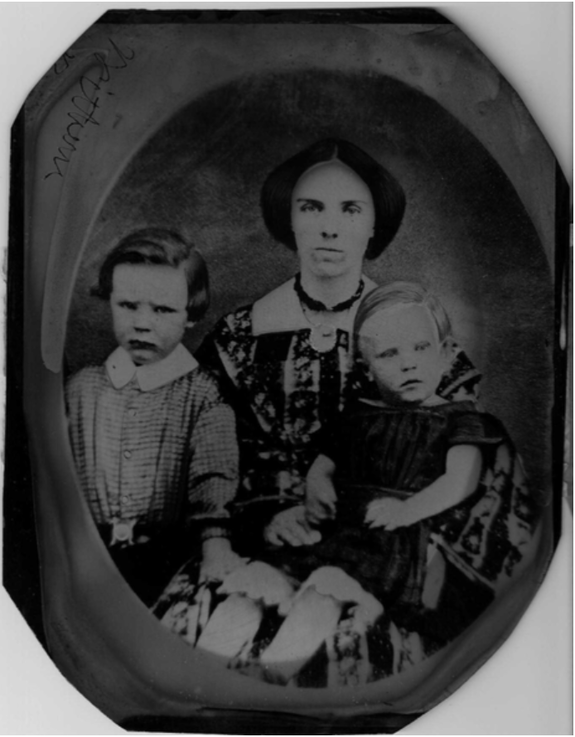
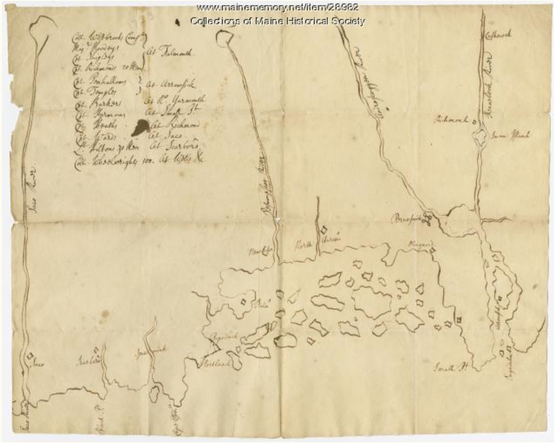
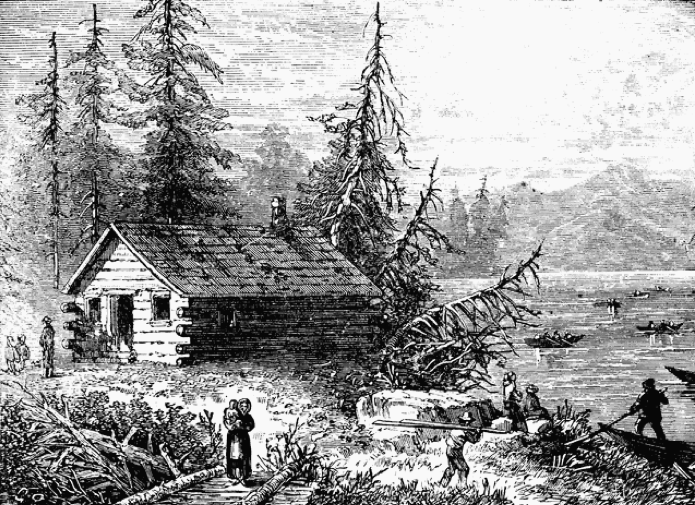
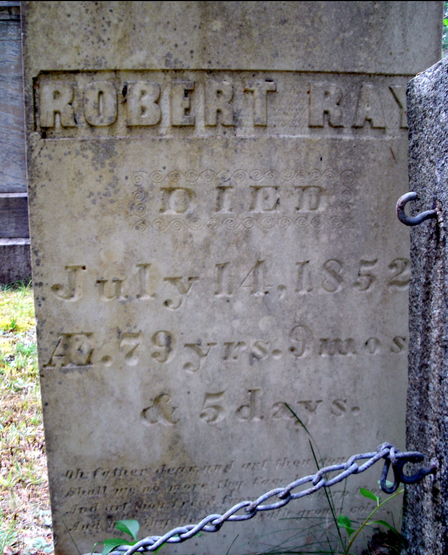
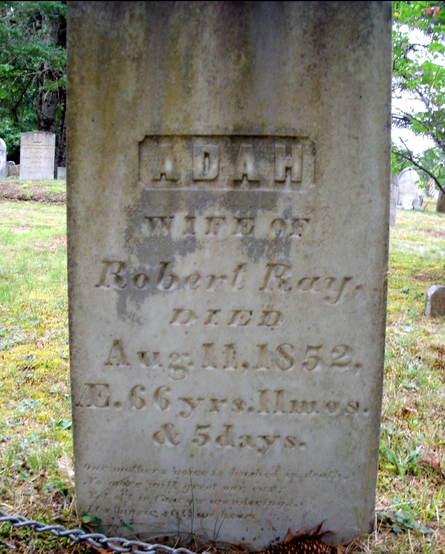
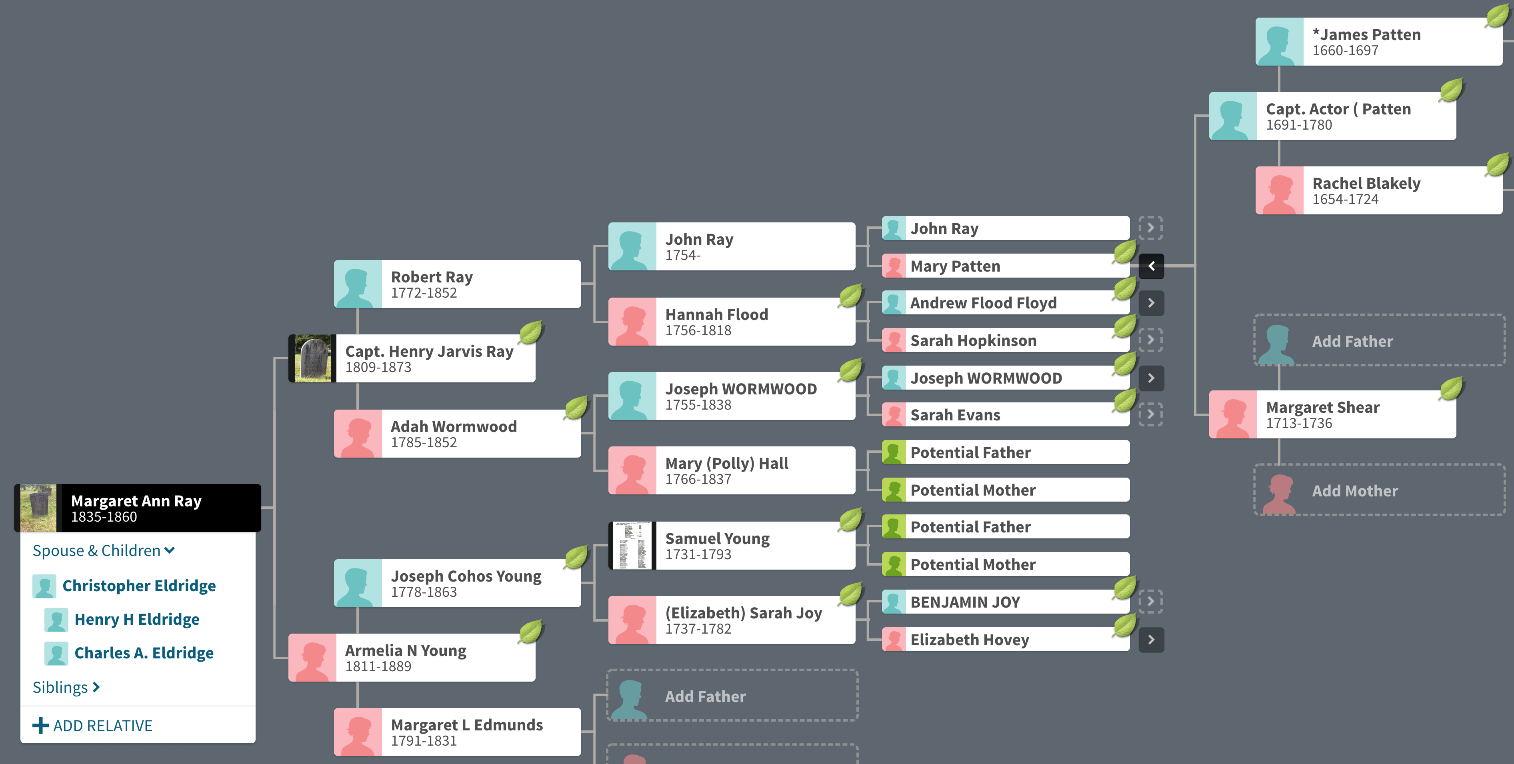
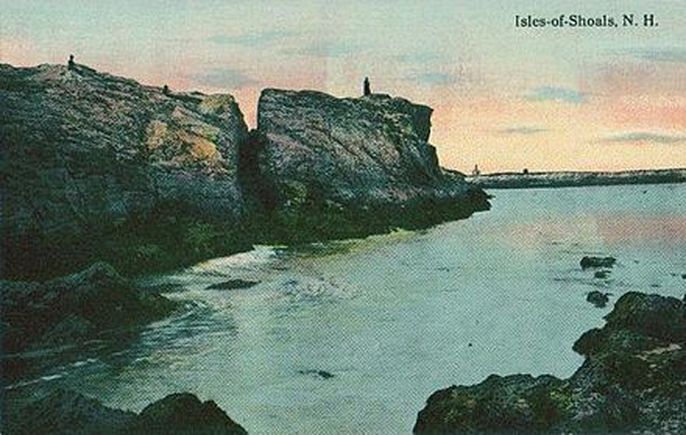
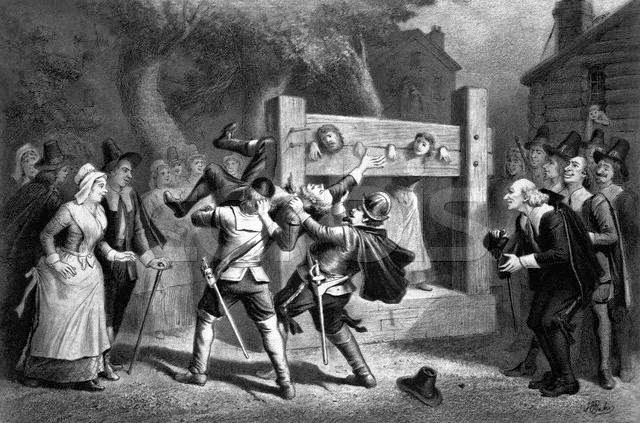
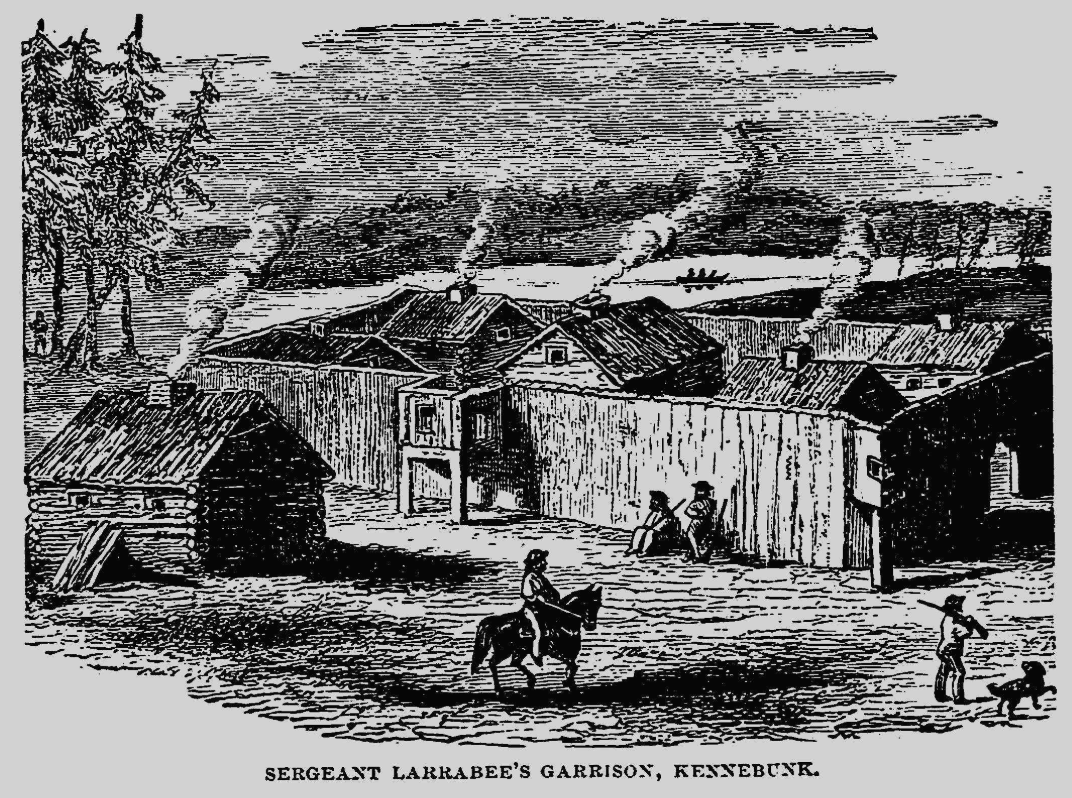
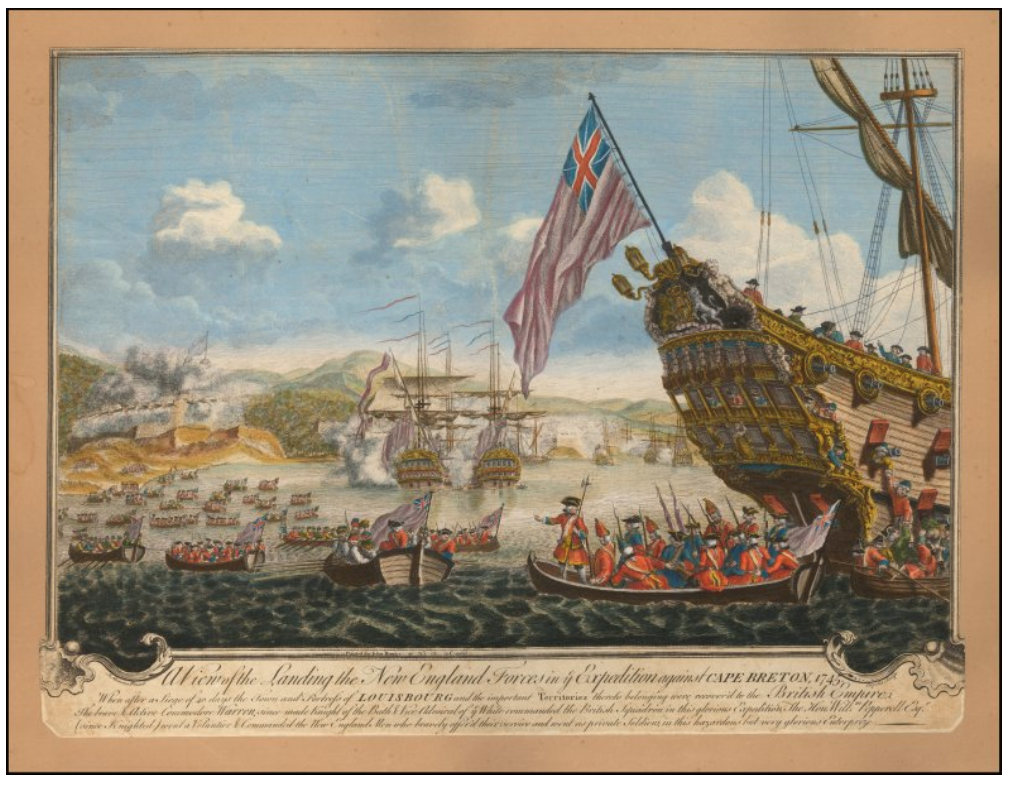
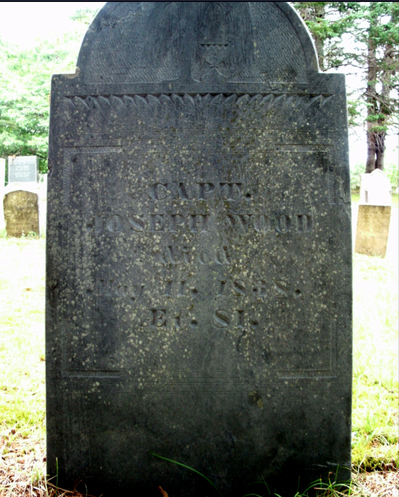
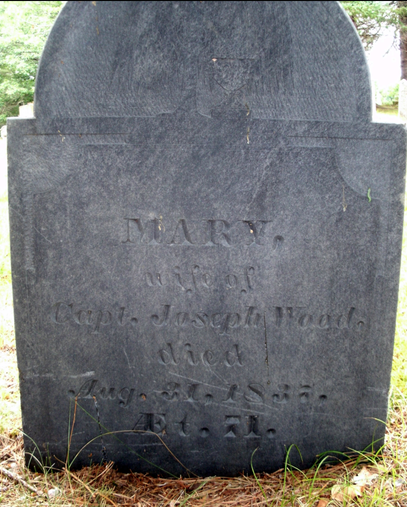
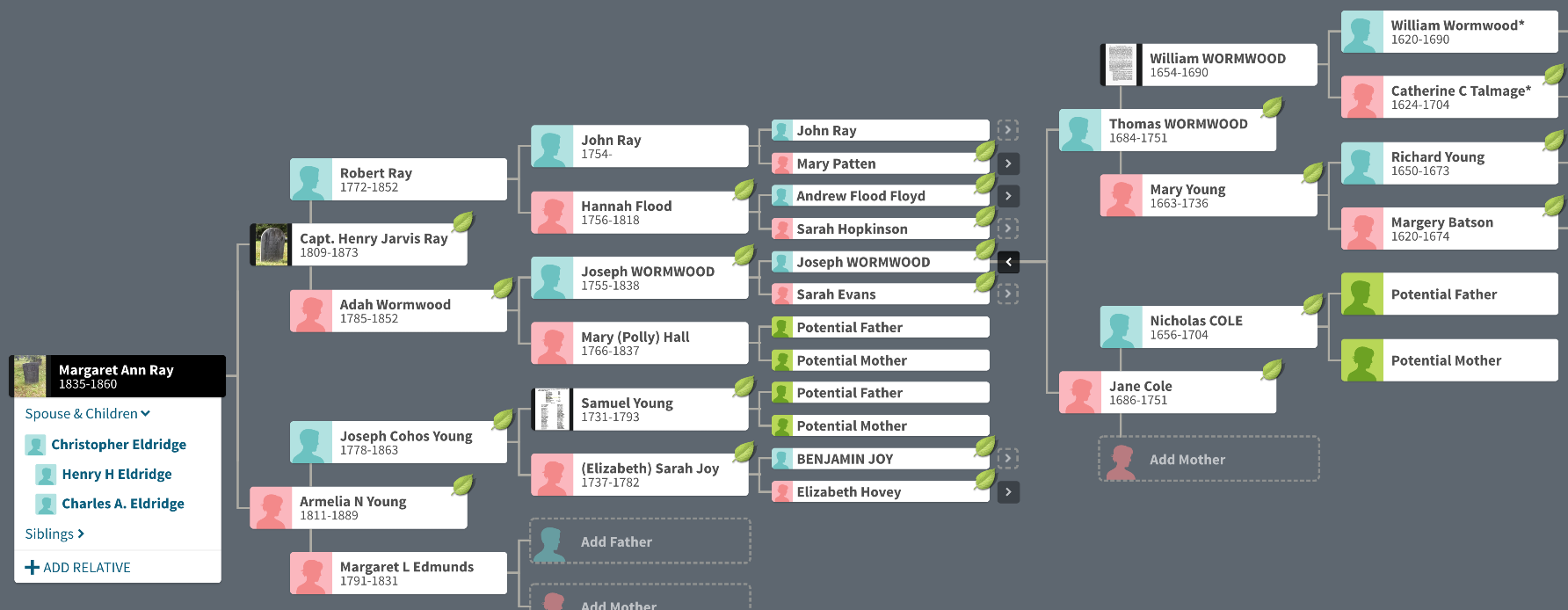
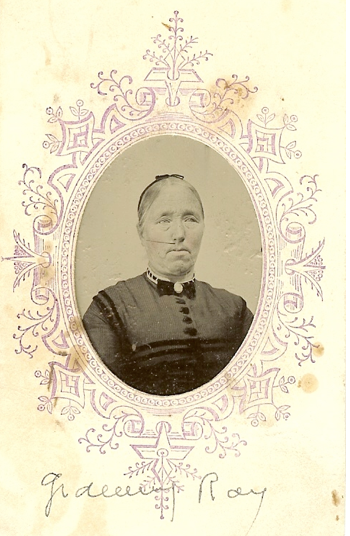
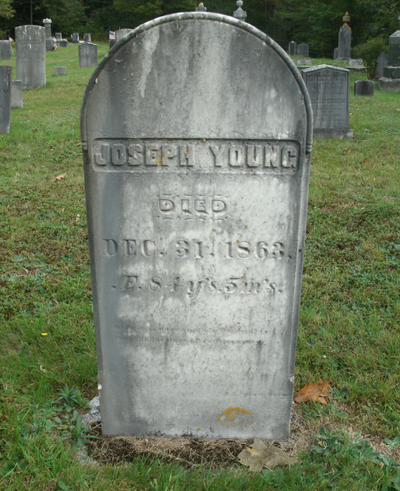
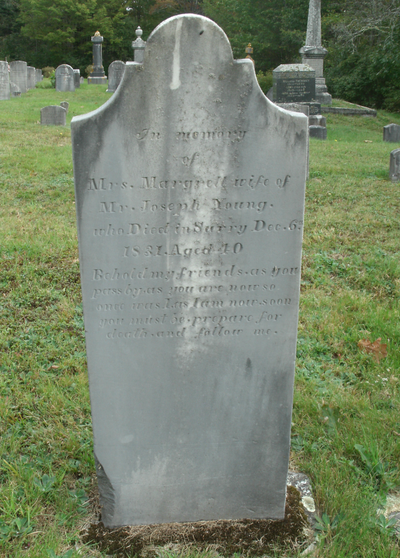
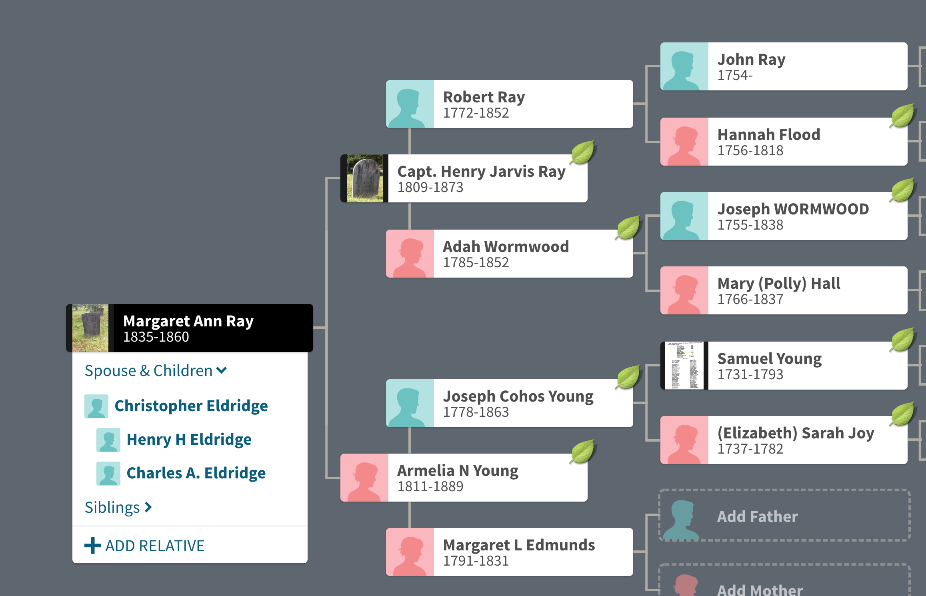
 RSS Feed
RSS Feed
